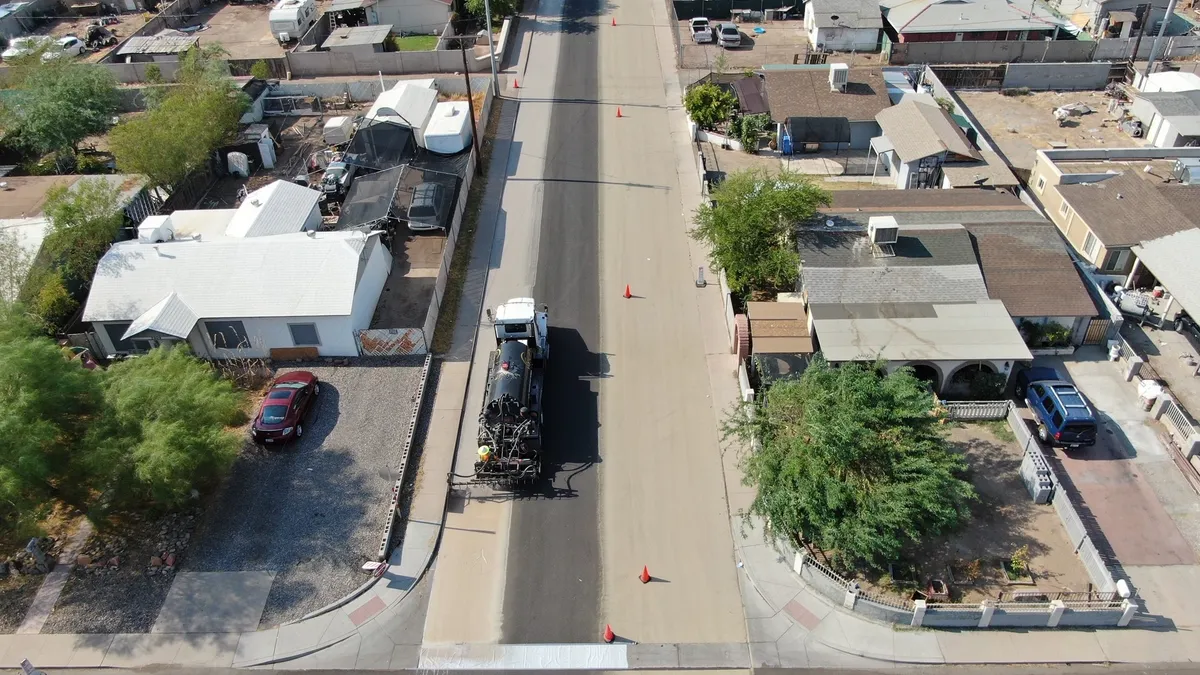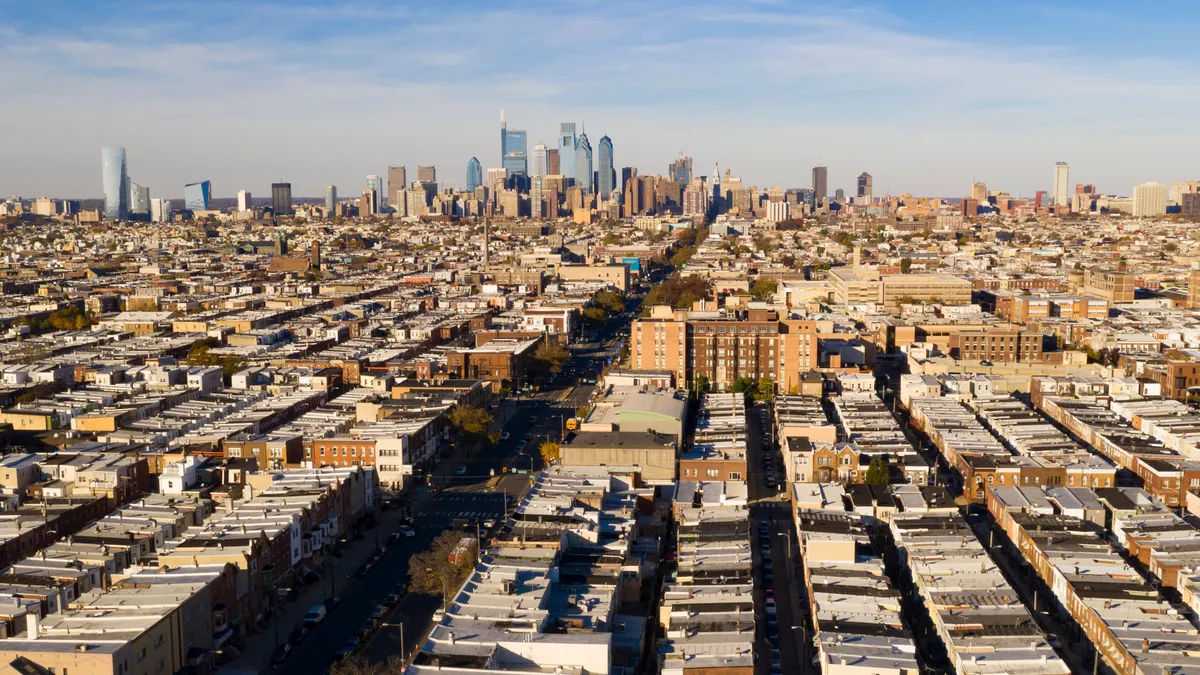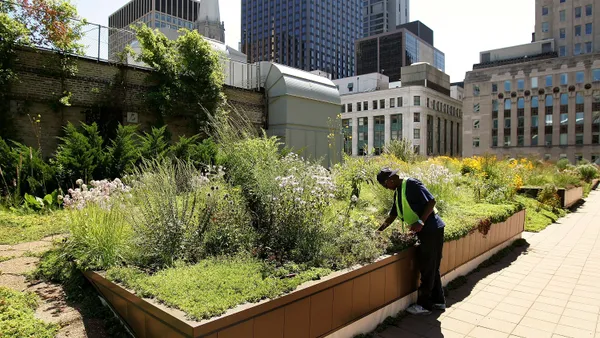Cities must be the primary beneficiaries of green investments for global nations to pursue a resilient, low-carbon recovery from the coronavirus pandemic, according to the Coalition for Urban Transitions.
That's the focus of the coalition's newest report, released Monday in partnership with the World Resources Institute (WRI) and C40 Cities. The paper analyzed how the allocation of stimulus funding across a number of environmental sectors can aid the international COVID-19 response and promote resiliency amid future crises.
The idea of a "green recovery" has been widely supported among local government officials in the United States and globally, with organizations like C40 Cities taking steps to develop task forces to prioritize climate in these efforts. A House subcommittee on Europe, Eurasia, Energy, and Environment is planning a hearing this month to examine the absence of climate and clean energy planning in national COVID-19 recovery efforts, with one House staffer saying the U.S. is "diverging from many other countries" who are prioritizing a green recovery.
There are some critics who argue that now is not the time to tackle climate challenges, as economic constraints hinder government operations, yet the authors of this report suggest climate actions align with economic recovery.
"To not look at addressing [the climate] crisis as part of a broader conversation of economic recovery would be unfair," said Manisha Gulati, senior advisor of the Coalition for Urban Transitions. "We need to start looking at how systems intersect and start finding solutions together."
The report identifies seven priority areas for investment through which national governments can create new jobs, protect vulnerable populations, yield economic gains and promote long-term resilience. The following summarizes the report's findings, including each area's policy options, job growth potential and emission reduction potential:
1. Green construction and retrofits
Key policy options: Mandatory energy efficiency building codes; minimum energy performance standards; energy audit and benchmarking schemes; green building or infrastructure rating schemes; incentives; green public procurement regulations.
Job potential: A $1 million investment would create 8 to 21 jobs in the energy efficiency sector vs. 3 jobs in the fossil fuel sector.
Emission reduction potential: The buildings sector holds 58% of the emission abatement potential in cities globally.
2. Clean mobility
Key policy options: Developing a public transport masterplan; setting targets for public transport modal split; requiring transit-oriented development; assigning dedicated bus and high-occupancy vehicle (HOV) lanes; investing in EV infrastructure and setting EV deployment targets; amending parking requirements; phasing out fossil fuel-powered vehicles.
Job potential: A $1 million investment would create 15 to 28 jobs in the EV and public transport sectors vs. 8 jobs in the road construction sector.
Emission reduction potential: The transport sector holds 21% of the emission abatement potential in cities globally.
3. Renewable energy
Key policy options (onsite): Public renewable energy deployments; renewable energy production targets; financial incentives; green public procurement; support of smart grid and storage projects.
Key policy options (offsite): Distributed renewable energy generation; investments in district heating/cooling; affordable green tariffs; opening electricity markets to non-utility actors; targeted auctions with long-term contractors.
Job potential: A $1 million investment would create 8 to 28 jobs in the renewable energy sector vs. 3 jobs in the fossil fuel sector.
Emission reduction potential: Decarbonizing urban electricity holds 50% of the emission abatement potential in cities globally.
4. Active transport
Key policy options: Targets for walking/cycling modal split; dedicated broad sidewalks and bike lanes; requiring the "15-minute neighborhood" in urban planning; legislation to protect pedestrians and cyclists; maximum parking requirements; bike-sharing schemes.
Job potential: A $1 million investment would create 11 to 27 jobs in the active transport infrastructure sector vs. 3 jobs in the road construction sector.
Emission reduction potential: Cycling is a "win-win with high carbon reduction benefits," the report reads. No concrete numbers were offered.
5. Nature-based solutions
Key policy options: Street tree planting programs; green space requirements in urban planning; minimum density requirements in urban planning; promoting green roofs and spaces; converting brownfields and underutilized land into green space.
Job potential: A $1 million investment would create 40 jobs in tree planting, restoration and management vs. 20 jobs in the "grey" water infrastructure sector.
Emission reduction potential: A maximum street tree-planting scenario across 245 global cities could result in an annual CO2 reduction of 7 million to 25 million metric tons.
6. Waste and resources
Key policy options: Financial support to recycling industries; single-use plastic bans; public education campaigns; expansion of household recycling and composting programs; guidance and enforcement of littering fines; incentives to build local recycling and reuse capacity.
Job potential: For every 1,000 metric tons of waste, 3 to 20 recycling, reuse and recovery jobs are needed vs. 0.1 landfill and incineration jobs.
Emission reduction potential: Waste and resource interventions hold the potential "to reduce emissions associated with our materials use by a third," according to a cited analysis by Material Economics.
7. R&D for clean technologies
Key policy options: Tax incentives, grants and subsidies; business support platforms; business challenges and awards; risk mitigation facilities; enhanced access to financing; multi-stakeholder collaboration platforms.
Job potential: The direct job growth potential per $1 million of investment in clean R&D is "insufficient to provide a comparison," the report reads, yet it touts the potential of job creation in manufacturing.
Emission reduction potential: Investment in clean R&D is seen "as a public good to cut global emissions," the report reads.
This report was developed for all nations pursuing COVID-19 recovery efforts, therefore the degree of success and challenges faced in each priority area will vary from country to country, Gulati said. And while each country will interpret the report in respect to its own recovery needs, the urgency to prioritize cities should apply to all nations, she said.
"There's one thing that the pandemic has shown us, and that's when cities stop working, so does the global economy, Gulati said. "So it's only natural that now that we are talking about economic recovery, we start looking at cities as a solution."






















